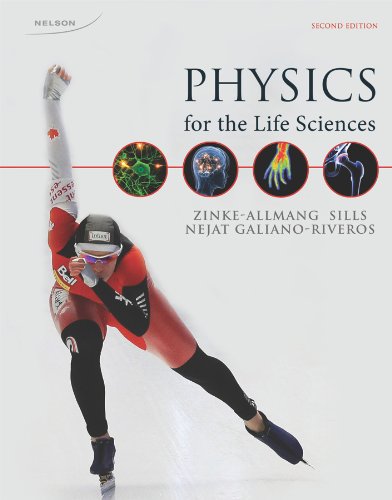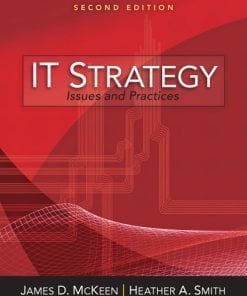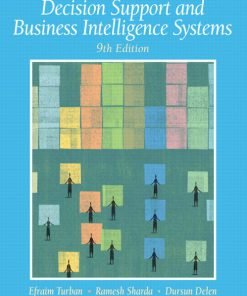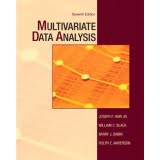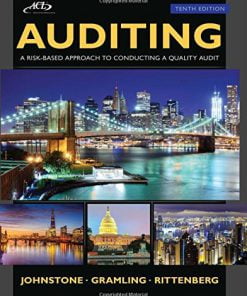Physics for The Life Sciences, 2nd Edition Solution Manual
$35.00 Original price was: $35.00.$26.50Current price is: $26.50.
Physics for The Life Sciences, 2nd Edition Solution Manual
Physics for The Life Sciences, 2nd Edition Solution Manual digital download immediately after payment is complete.
Product details:
- ISBN-10 : 0176502688
- ISBN-13 : 978-0176502683
- Author: Eduardo Galiano-Riveros, Reza Nejat
Taking an algebra-based approach with the selective use of calculus, this title includes basic physics concepts such as: using a fresh layout, consistent and student-tested art program, extensive use of conceptual examples, analytical problems, and instructive and engaging case studies.
Table of contents:
- Part 1: The Mechanics of Biological Systems
- Ch 1: Physics and the Life Sciences
- 1.1: The Predictable Universe
- 1.2: Significant Figures
- 1.3: Scientific Notation
- 1.4: Units of Measure
- 1.5: Dimensional Analysis
- 1.6: Proportionality
- 1.7: Order of Magnitude Estimation
- Summary
- Multiple-Choice Questions
- Conceptual Questions
- Analytical Problems
- Answers to Concept Questions
- Ch 2: Kinematics
- 2.1: Measuring Motion
- 2.2: Distance and Displacement
- 2.3: Speed and Velocity
- 2.4: Acceleration
- 2.5: Motion in Two Dimensions
- 2.6: Uniform Circular Motion
- 2.7: Physiological Detection of Velocity
- 2.8: Physiological Detection of Acceleration
- Summary
- Multiple-Choice Questions
- Conceptual Questions
- Analytical Problems
- Answers to Concept Questions
- Ch 3: Forces
- 3.1: Muscles as an Origin of Forces
- 3.2: What is a Force?
- 3.3: Properties of a Force
- 3.4: Action of a Force
- 3.5: Measuring Forces
- 3.6: Categories of Forces
- 3.7: Fundamental Forces
- 3.8: Convenience Forces
- 3.9: Free Body Diagram
- 3.10: Equilibrium
- 3.11: Can Our Bodies Detect Forces?
- Summary
- Multiple-Choice Questions
- Conceptual Questions
- Analytical Problems
- Answers to Concept Questions
- Ch 4: Newton’s Laws
- 4.1: Newton’s Laws of Motion
- 4.2: Free Body Diagram, Revisited
- 4.3: Newton’s First Law
- 4.4: Newton’s Second Law
- 4.5: Newton’s Third Law
- 4.6: Application of Newton’s Laws, Convenience Forces Revisited
- 4.7: Weight and Apparent Weight
- 4.8: Physiological Applications of Newton’s Laws
- Summary
- Multiple-Choice Questions
- Conceptual Questions
- Analytical Problems
- Answers to Concept Questions
- Ch 5: Centre of Mass and Linear Momentum
- 5.1: Centre of Mass Definition
- 5.2: Motion of the Centre of Mass
- 5.3: Newton’s Third Law and Linear Momentum
- 5.4: Changes of Linear Momentum and Newton’s Second Law
- Summary
- Multiple-Choice Questions
- Conceptual Questions
- Analytical Problems
- Answers to Concept Questions
- Ch 6: Torque and Equilibrium
- 6.1: Force and Extended Object
- 6.2: Torque
- 6.3: Mechanical Equilibrium for a Rigid Object
- 6.4: Classes of Levers and Physiological Applications
- 6.5: Since When Did Hominids Walk on Two Legs?
- Summary
- Multipe-Choice Questions
- Conceptual Questions
- Analytical Problems
- Answers to Concept Questions
- Part 2: Energy, Biochemistry, and Transport Phenomena
- Ch 7: Energy and Its Conservation
- 7.1: Observations of Work and Energy
- 7.2: Basic Concepts
- 7.3: Work for a Single Object
- 7.4: Energy
- 7.5: Is Mechanical Energy Conserved?
- Summary
- Multiple-Choice Questions
- Conceptual Questions
- Analytical Problems
- Answers to Concept Questions
- Ch 8: Gases
- 8.1: The Basic Parameters of the Respiratory System at Rest
- 8.2: Pressure-Volume Relations of the Air in the Lungs
- 8.3: The Empirical Gas Laws
- 8.4: Mechanical Model of the Ideal Gas
- 8.5: Energy Contained in the Ideal Gas
- 8.6: Implications of the Kinetic Gas Theory
- 8.7: Mixed Gases
- Summary
- Multiple-Choice Questions
- Conceptual Questions
- Analytical Problems
- Answers to Concept Questions
- Ch 9: Work and Heat for Non-Mechanical Systems
- 9.1: Quantitative Representation of Dynamic Breathing
- 9.2: Work On or By a Gas
- 9.3: Work for Systems with Variable Pressure
- 9.4: Heat and the First Law of Thermodynamics
- 9.5: The Physics of the Respiratory System
- Summary
- Multiple-Choice Questions
- Conceptual Questions
- Analytical Problems
- Answers to Concept Questions
- Ch 10: Thermodynamics
- 10.1: Quantifying Metabolic Processes
- 10.2: Basic Thermodynamic Processes
- 10.3: Cyclic Processes
- 10.4: Reversibility
- 10.5: The Second Law of Thermodynamics
- 10.6: Chemical Thermodynamics: An Overview
- 10.7: Liquid Solutions: Raoult’s Law
- Summary
- Multiple-Choice Questions
- Conceptual Questions
- Analytical Problems
- Answers to Concept Questions
- Ch 11: Transport of Energy and Matter
- 11.1: Membranes in Living Organisms
- 11.2: A New Model System: Physical Membranes as an Idealized Concept
- 11.3: Heat Conduction
- 11.4: Diffusion
- Summary
- Multiple-Choice Questions
- Conceptual Questions
- Analytical Problems
- Answers to Concept Questions
- Ch 12: Static Fluids
- 12.1: Model System: The Ideal Stationary Fluid
- 12.2: Pressure in an Ideal Stationary Fluid
- 12.3: Buoyancy
- 12.4: Fluid Surfaces
- 12.5: Bubbles and Droplets
- 12.6: Capillarity
- Summary
- Multiple-Choice Questions
- Conceptual Questions
- Analytical Problems
- Answers to Concept Questions
- Ch 13: Fluid Flow
- 13.1: Basic Issues in Blood Flow
- 13.2: Flow of an Ideal Dynamic Fluid
- 13.3: Flow of a Newtonian Fluid
- 13.4: Special Topics in Fluid Flow
- Summary
- Multiple-Choice Questions
- Conceptual Questions
- Analytical Problems
- Answers to Concept Questions
- Part 3: Vibrations, Acoustics, and Hearing
- Ch 14: Elasticity and Vibrations
- 14.1: Elasticity
- 14.2: Plastic Deformations
- 14.3: Hooke’s Law
- 14.4: Vibrations
- Summary
- Multiple-Choice Questions
- Conceptual Questions
- Analytical problems
- Answers to Concept Questions
- Ch 15: Sound I
- 15.1: The Hearing of Dolphins
- 15.2: Piston-Confined Gas under Hydraulic Stress
- 15.3: Waves in an Unconfined Medium
- 15.4: Waves in a Confined Medium
- 15.5: Resonance
- 15.6: Hearing
- Summary
- Multiple-Choice Questions
- Conceptual Questions
- Analytical Problems
- Answers to Concept Questions
- Ch 16: Sound II
- 16.1: Sound Absorption
- 16.2: Reflection and Transmission of Waves at Flat Interfaces
- 16.3: The Ultrasound Image
- 16.4: Doppler Ultrasound: The Use of the Doppler Effect in Medicine
- Summary
- Multiple-Choice Questions
- Conceptual Questions
- Analytical Problems
- Part 4: Electric Phenomena
- Ch 17: Electric Force and Field
- 17.1: Electric Charge and Force
- 17.2: Newton’s Laws and Charged Objects
- 17.3: How Do We Approach Electric Phenomena in Life Science Applications?
- 17.4: Electric Field
- Summary
- Multiple-Choice Questions
- Conceptual Questions
- Analytical Problems
- Answers to Concept Questions
- Ch 18: Electric Energy and Potential
- 18.1: Nerves as a Physical and Physiochemical System
- 18.2: The Electric Energy
- 18.3: The Electric Potential
- 18.4: Conservation of Energy
- 18.5: Capacitors
- Summary
- Multiple-Choice Questions
- Conceptual Questions
- Analytical Problems
- Answers to Concept Questions
- Ch 19: The Flow of Charges
- 19.1: Moving Point Charges in a Resting Nerve
- 19.2: Electrochemistry of Resting Nerves
- 19.3: The Signal Decay Time of a Resting Nerve
- 19.4: Stimulated Nerve Impulses
- 19.5:Extended Case Study in Medicine: Electrocardiography
- 19.6: The Electrocardiogram
- Summary
- Multiple-Choice Questions
- Conceptual Questions
- Analytical problems
- Answers to Concept Questions
- Part 5: Atomic, Electromagnetic, and Optical Phenomena
- Ch 20: The Atom
- 20.1: The Atom in Classical Physics: Rutherford’s Model
- 20.2: Semi-Classical Model: Niels Bohr’s Hydrogen Atom
- 20.3: Quantum Mechanical Model of the Atom
- 20.4: Appendix: Relativistic Speed, Energy, and Momentum of an Electron
- Summary
- Multiple-Choice Questions
- Conceptual Questions
- Analytical Problems
- Answers to Concept Questions
- Ch 21: Magnetism and Electromagnetic Waves
- 21.1: Magnetic Force and Field Due to an Electric Current
- 21.2: Magnetism Due to Charged Particles in Motion
- 21.3: Aston’s Mass Spectrometer
- 21.4: Interacting Electric and Magnetic Fields
- 21.5: Physics and Physiology of Colour
- Summary
- Multiple-Choice Questions
- Conceptual Questions
- Analytical Problems
- Ch 22: Geometric Optics
- 22.1: What is Optics?
- 22.2: Reflection
- 22.3: Refraction
- 22.4: Applications in Optometry and Ophthalmology
- 22.5: The Light Microscope
- Summary
- Multiple-Choice Questions
- Conceptual Questions
- Analytical Problems
- Answers to Concept Questions
- Ch 23: The Atomic Nucleus
- 23.1: Stable Atomic Nuclei
- 23.2: Nuclear Force and Energy
- 23.3: Radioactive Decay
- 23.4: Angular Momentum
- 23.5: Nuclear Spins in a Magnetic Field
- 23.6: Two-Level Systems
- Summary
- Conceptual Questions
- Analytical Problems
- Answers to Concept Questions
- Part 6: Applied Clinical Physics
- Ch 24: X-Rays
- 24.1: Origin of X-Rays
- 24.2: Photon Interaction Processes with Matter
- 24.3: Photon Attenuation
- 24.4: Contrast in X-Ray Images
- 24.5: Radiation Dose
- 24.6: Appendix: Energy of Scattered Photon for the Compton Effect
- Summary
- Conceptual Questions
- Analytical Problems
- Answers to Concept Questions
- Ch 25: Diagnostic Nuclear Medicine
- 25.1: Historical Introduction
- 25.2: Radioactive Decay
- 25.3: The Detection of Radiation
- 25.4: The Gamma (Anger) Camera
- 25.5: Single-Photon Emission Computed Tomography (SPECT) Imaging
- 25.6: Positron Emission Tomography (PET) Imaging
- 25.7: Clinical Applications
- Summary
- Conceptual Questions
- Analytical Problems
- Ch 26: Radiation Therapy
- 26.1: Introduction
- 26.2: The Co-60 Unit
- 26.3: The Medical Linear Accelerator
- 26.4: The Percent Depth Dose Function
- 26.5: The Tissue Air Ratio Function
- 26.6: Clinical Applications
- Summary
- Conceptual Questions
- Analytical Problems
- Ch 27: Nuclear Magnetic Resonance
- 27.1: Nuclear Magnetic Resonance in Organic Chemistry
- 27.2: Interactions of Nuclear Spins in Condensed Matter
- 27.3: Pulse Repetition Time and Time of Echo
- 27.4: Spin Echo Technique
- 27.5: Imaging Utilizing the Gradient Field Method
- Summary
- Conceptual Questions
- Analytical Problems
- Index
People also search:
physical chemistry for the life sciences 2nd edition pdf
university physics for the life sciences pdf
university physics for the life sciences knight pdf
Related products
Solution Manual
Solution Manual
Solution Manual
Solution Manual
International Accounting Doupnik 4th Edition Solutions Manual
Solution Manual
Prentice Hall’s Federal Taxation 2014 Comprehensive Rupert 27th Edition Solutions Manual
Solution Manual
Auditing A Risk Based-Approach to Conducting a Quality Audit Johnstone 10th Edition Solutions Manual




